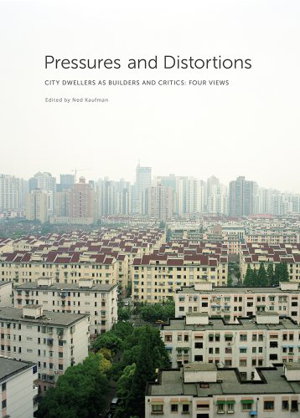
PublishedOro Editions, November 2014 |
ISBN9780615412702 |
FormatHardcover, 438 pages |
Dimensions29.8cm × 21cm |
'Pressures and Distortions' provides a close-up look at how residents of cities in the developing world are reshaping their environments in response to social, economic, and environmental changes. The cities chronicled range from China through Indonesia to Latin America.
In each of the book's four sections, a team of researchers explores how an urban phenomenon of global importance is playing out in a specific city. The studies analyse the impacts of housing shortages on the residents of Shenzhen's vanishing urban villages and Shanghai's deteriorating lanes; the production of self-built housing and neighbourhoods in Mexico City (as well as Lima, Rio de Janeiro, and Bogota); the performance of disaster relief housing constructed in Banda Aceh after the disastrous earthquake and tsunami of 2004; and the reception of Bogota's award-winning new public buildings and spaces by urban residents. Throughout, the authors take a resident-centred view of urbanism and architecture. They interview city dwellers and painstakingly document their living environments as well as their self-built home improvements, using photography and measured drawings. They follow city dwellers with video cameras, recording their day-to-day interactions with urban spaces and with other inhabitants. They carefully chart the stages through which self-built communities are established and consolidated. In each case, the authors use critical examination of policy frameworks and statistical evidence to situate fine-grained observation within a larger context of urban production. Their findings avoid simplistic prescriptions while prompting constructive proposals for governments, NGOs, designers, and communities. Illustrated throughout

